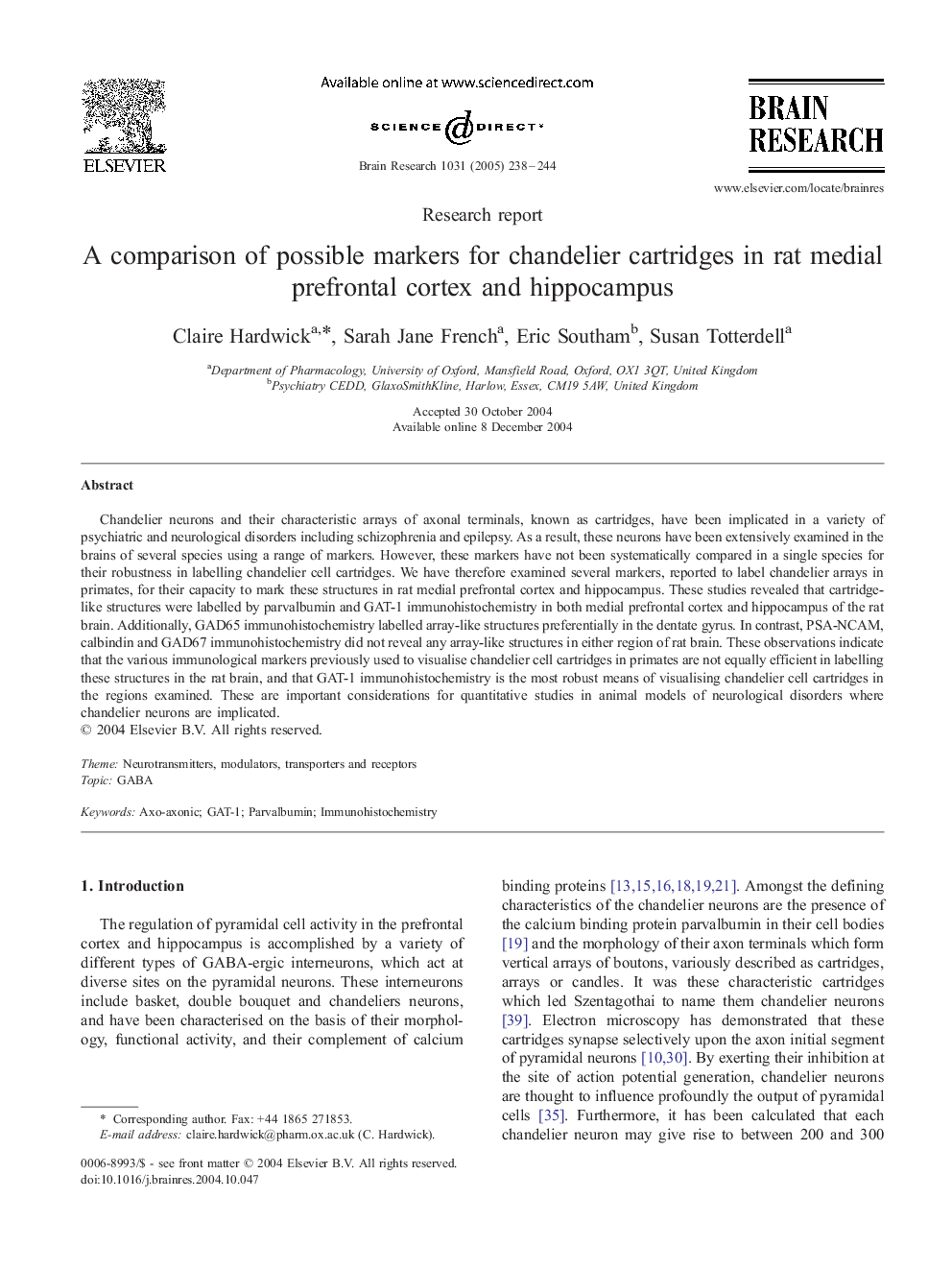| کد مقاله | کد نشریه | سال انتشار | مقاله انگلیسی | نسخه تمام متن |
|---|---|---|---|---|
| 9416855 | 1292986 | 2005 | 7 صفحه PDF | دانلود رایگان |
عنوان انگلیسی مقاله ISI
A comparison of possible markers for chandelier cartridges in rat medial prefrontal cortex and hippocampus
دانلود مقاله + سفارش ترجمه
دانلود مقاله ISI انگلیسی
رایگان برای ایرانیان
کلمات کلیدی
موضوعات مرتبط
علوم زیستی و بیوفناوری
علم عصب شناسی
علوم اعصاب (عمومی)
پیش نمایش صفحه اول مقاله

چکیده انگلیسی
Chandelier neurons and their characteristic arrays of axonal terminals, known as cartridges, have been implicated in a variety of psychiatric and neurological disorders including schizophrenia and epilepsy. As a result, these neurons have been extensively examined in the brains of several species using a range of markers. However, these markers have not been systematically compared in a single species for their robustness in labelling chandelier cell cartridges. We have therefore examined several markers, reported to label chandelier arrays in primates, for their capacity to mark these structures in rat medial prefrontal cortex and hippocampus. These studies revealed that cartridge-like structures were labelled by parvalbumin and GAT-1 immunohistochemistry in both medial prefrontal cortex and hippocampus of the rat brain. Additionally, GAD65 immunohistochemistry labelled array-like structures preferentially in the dentate gyrus. In contrast, PSA-NCAM, calbindin and GAD67 immunohistochemistry did not reveal any array-like structures in either region of rat brain. These observations indicate that the various immunological markers previously used to visualise chandelier cell cartridges in primates are not equally efficient in labelling these structures in the rat brain, and that GAT-1 immunohistochemistry is the most robust means of visualising chandelier cell cartridges in the regions examined. These are important considerations for quantitative studies in animal models of neurological disorders where chandelier neurons are implicated.
ناشر
Database: Elsevier - ScienceDirect (ساینس دایرکت)
Journal: Brain Research - Volume 1031, Issue 2, 21 January 2005, Pages 238-244
Journal: Brain Research - Volume 1031, Issue 2, 21 January 2005, Pages 238-244
نویسندگان
Claire Hardwick, Sarah Jane French, Eric Southam, Susan Totterdell,